It’s said that there are over 10,000 temples on the island of Bali. After paying attention to the buildings along the roads for hours, I can actually believe that. They are scattered everywhere like stray dogs – varying sizes and levels of importance – or like bars in Lutheran neighborhoods. Luckily we researched them a bit before we visited, and had in mind about a dozen that would be a thrill to visit. They are of course the more showy, famous or popular ones, and all of them require traditional sarongs to enter. Women must also cover their shoulders and generally not show skin in a place of worship in Bali. That’s a bit of a challenge when it’s 90 degrees, but we all knew this going in and went to the trouble to buy ourselves each a sarong at the beginning of the visit. It was a good investment, as they lasted us the duration and made good souvenirs.
One of the last temples we visited was Pura Lempuyang, also known as The White Temple. There are nine directional temples on Bali. They are the the highest and more important variety on the island, and with 10,000, it’s necessary to know which are more important than others. We fully anticipated visiting the most holy and important of the temples – Pura Besakih – The Mother Temple – on the flank of the highest mountain, Mount Agung, but, well, we ran out of time. It’s one of the reasons to go back, I guess.
We did end up seeing three of the nine and one of them was Pura Lempuyang. Pura is a word that describes Balinese Hindu temples, specifically, and derives from the Sanscrit word ‘puri,’ meaning walled city or palace. Lempuyang is the name of the mountain where the temple resides. The origin of this word most closely matches to lampu (light) and hyang (god) or Light of God when put together. So its color is white, and its direction is East.
Our first view
Now we’ve climbed some steps and are standing at that door in the last photo
This is after more steps – I think “pura” really means “lots of steps” as this one has more than 1700 steps in all. Most of them seemed to have about 350.
Chris and the entry door, with Mt Agung in the background, just visible through the door (mostly cloud-shrouded).
I spent a fair amount of time with the dragon heads at the bottom of the steps here. Me on the right, Maddy on the left, two more of us going up already.
Chris and Michelle reaching the second doorway. Our guide unlocked each door for us and we were the only ones there. It’s busiest in the morning when it’s still cool enough that you don’t melt while climbing the steps (tourist error!).
I just finished the dragon steps and am entering into the main plaza area. Each entry is taken with care because there is often a protocol – you can’t go up those steps, or it’s closed right now.
Balinese are called to make a pilgrimage to this temple twice a year during certain ceremonies. Actually, from what I gathered, they are called to make pilgrimages to all nine of the directional temples, and Besakih a couple extra times, plus their own village temples (of which there are three) and their own family temple. Add it all up and they’re coming or going to a temple most days of the year. And that’s what we witnessed in most cases. Temples and worship are a huge part of the culture, and like Buddhism in Nepal, they knit it into their everyday life constantly. Setting out incense and flowers is as routine and essential as donning shoes and walking to work.
The look back to Mt Agung (the tallest mountain in Bali) from the second set of stairs.
With the plaza and stairs in view. Mt Agung in the clouds, but visible.
I loved all the faces of Bali. They were most prominent around the temples
Almost life-size statue on the way up the steps
Giant dragon-serpent creature was the casing for the stairs. Each of these guys was about 10 feet tall.
I think these are the faces of Good (rather than Evil) which is not probably what you might infer from their teeth and huge eyes.
This is a flying lion-monkey thing. I’m sure he has a name, but I don’t know it.
Kids at the top. They all got along swimmingly.
This is our guide resting while we took photos and wandered. Whenever you wandered near enough, he imparted some wisdom or told a story of the place. I could have listened to him all day. His name was Ketut, which means 4th born, but he is the eighth born in his family. The reason for this is Balinese have 4 names: Wayan, Maday, Nyoman and Ketut. They mean first born, second born, third born and fourth born. After the fourth child, they repeat names, so the fifth child and the first child are called the same. To keep from getting confused, they use nicknames a lot.
This was the last area we were allowed into. Had we been there at a reasonable hour (before 10 am) we would have been invited to take a bus ride or motorcycle ride up to the next section of the temple. You can see the next section in the distance right at the center of the photo. (click to enlarge)
There are seven sections of the temple complex, broken into three locations along the road up the mountain. From the video below, I think he says you can stay on steps all the way up between the other sections, but most visitors (who are not worshiping) take the road. It’s two km up the road to the next location, where sections 3,4 and 5 reside. Then another mile up to the very top where the last two sections are. The last one is the target, of course, but only 1 and 2 (this location) were open this late in the day. (Another reason to go again – I’d love to climb 1700 steps to the top!)
The steps back down were along the outside – I think this is protocol – up in the middle, down on the outside, but I can’t be sure. The guides might have just wanted to give us a different view.
Looking back up at the first temple door
Another entrance. I liked the lions on the gate.
Here’s a video and some of our guide’s description as I pan around the plaza.
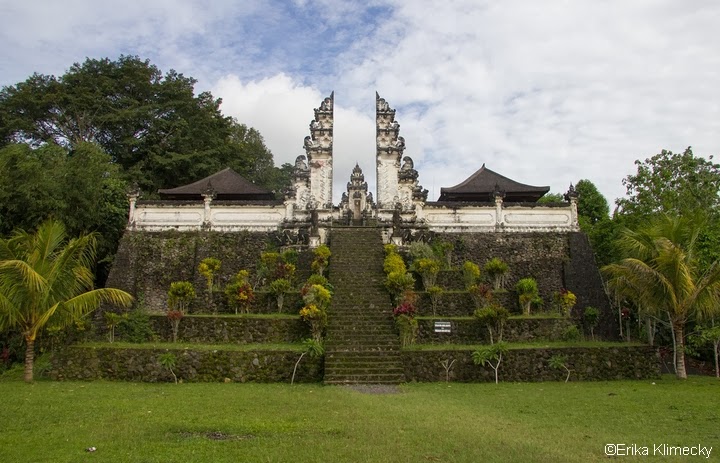
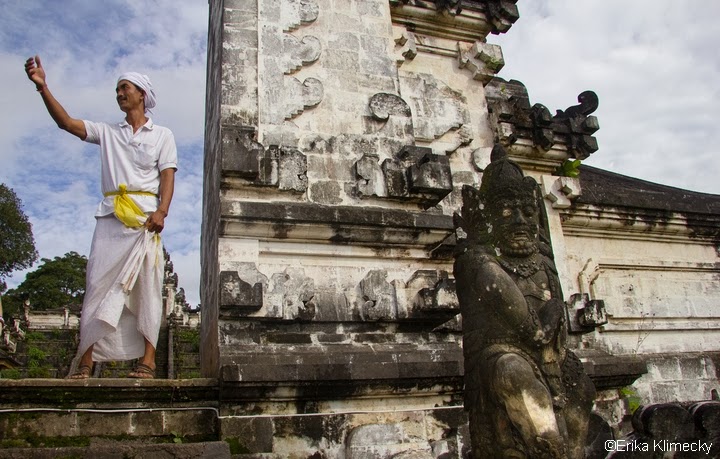
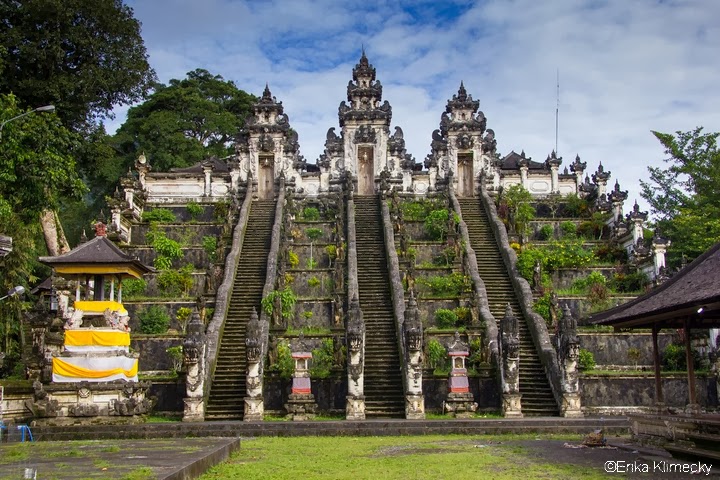
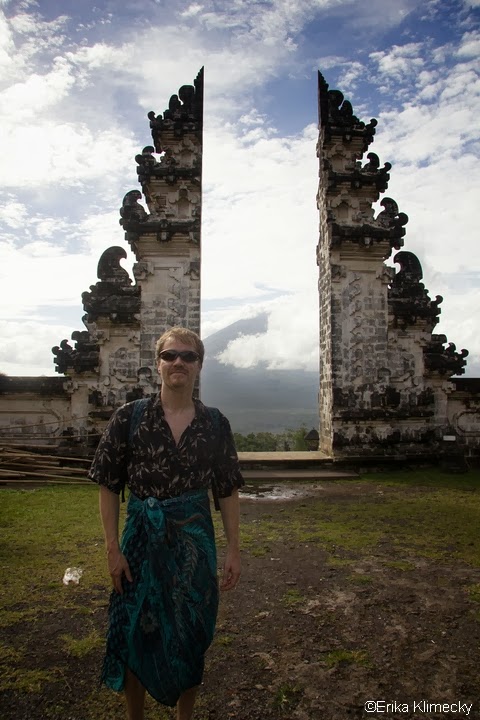
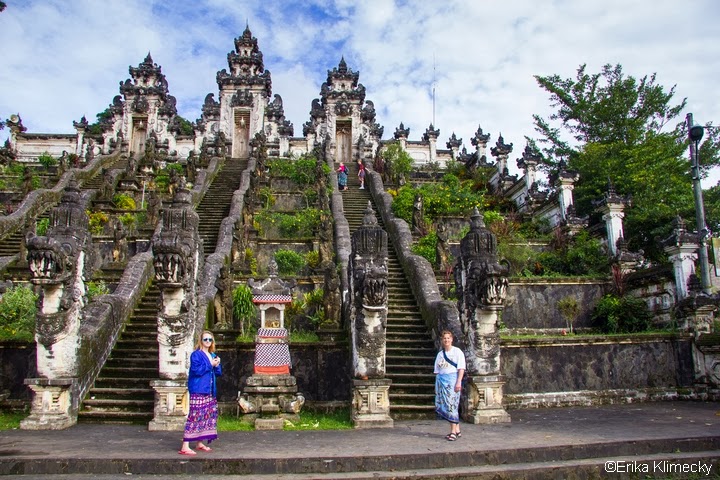
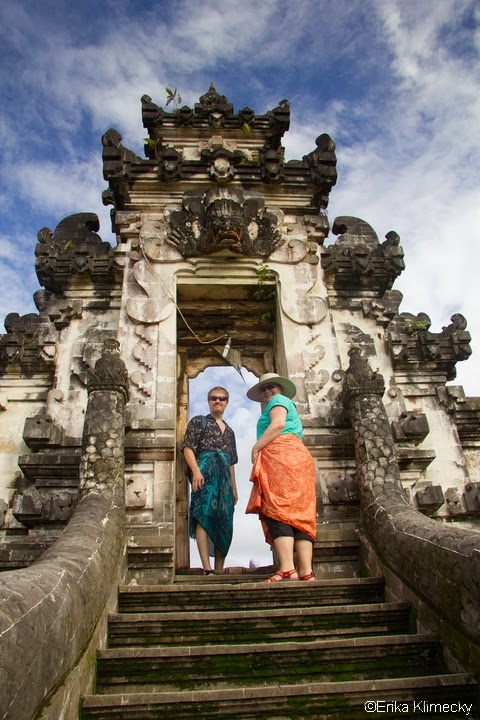
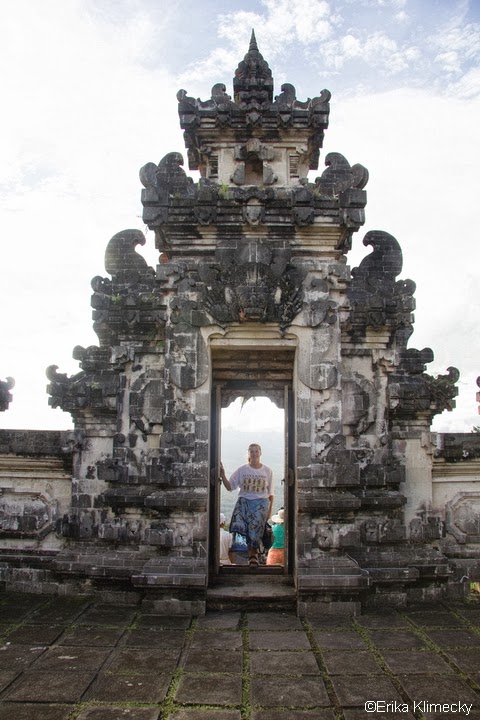
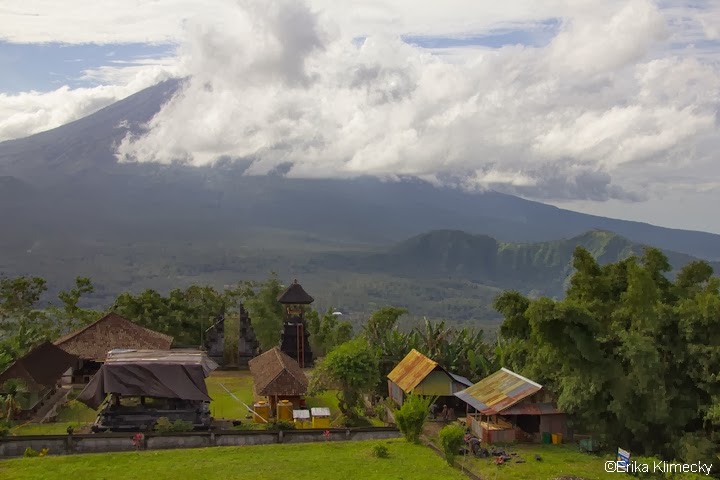
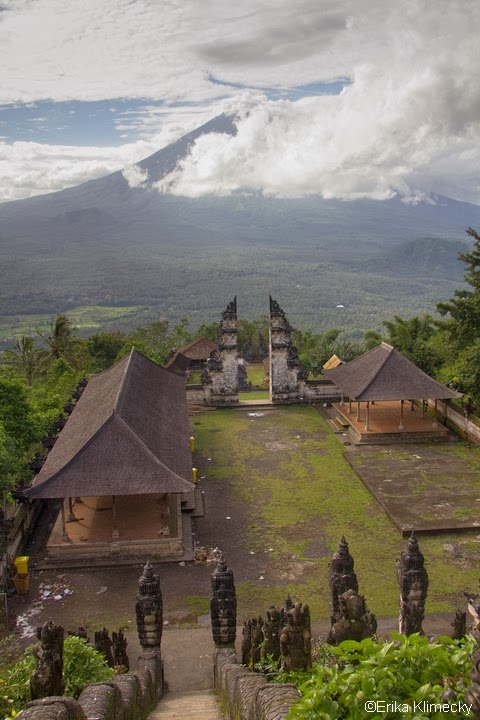

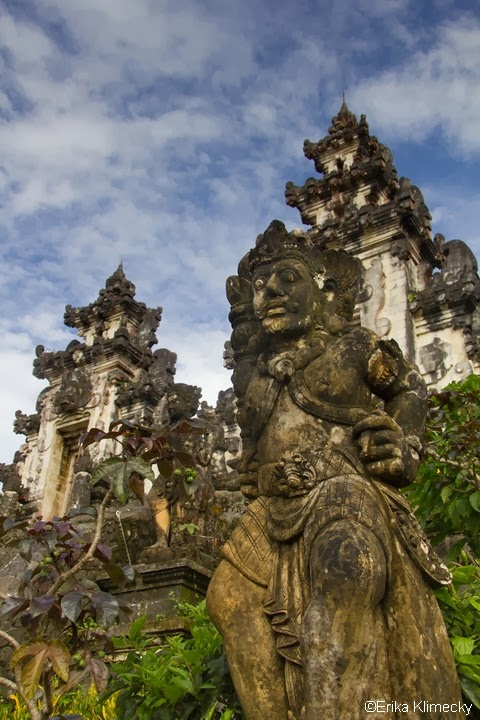
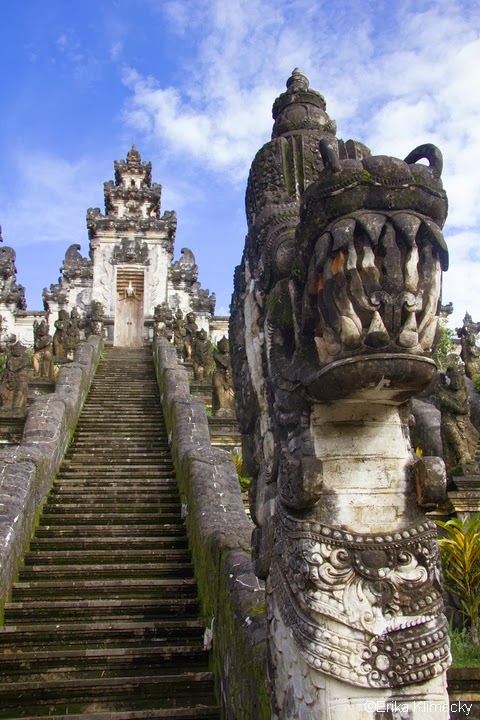
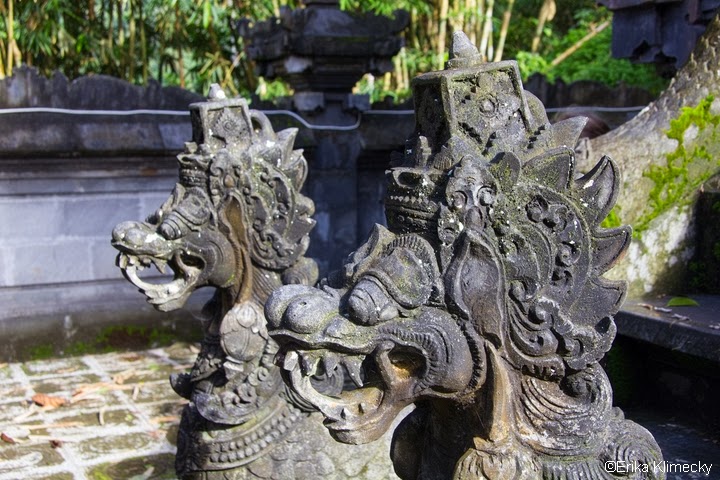
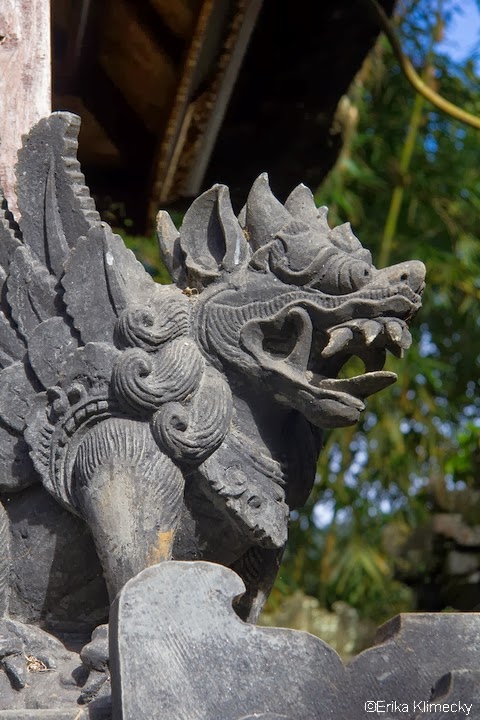
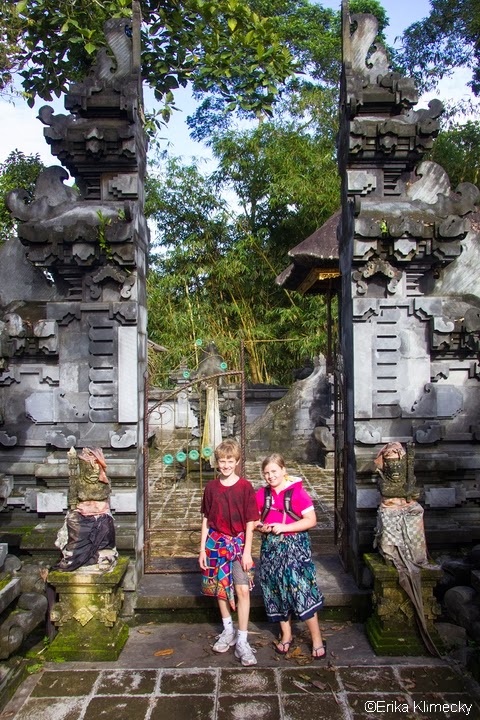
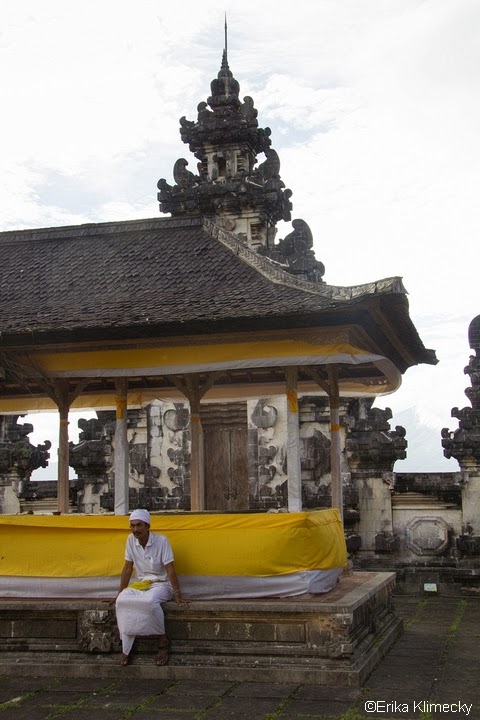
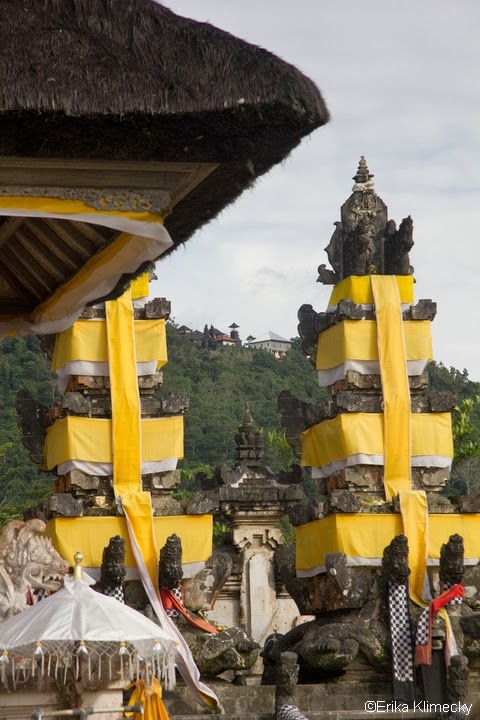
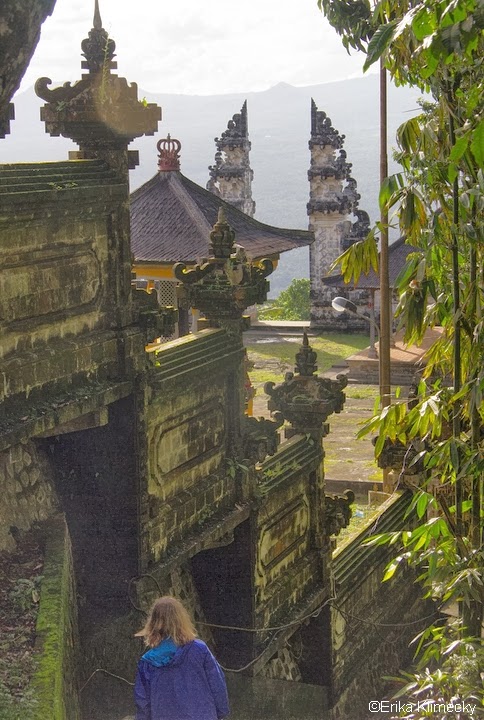
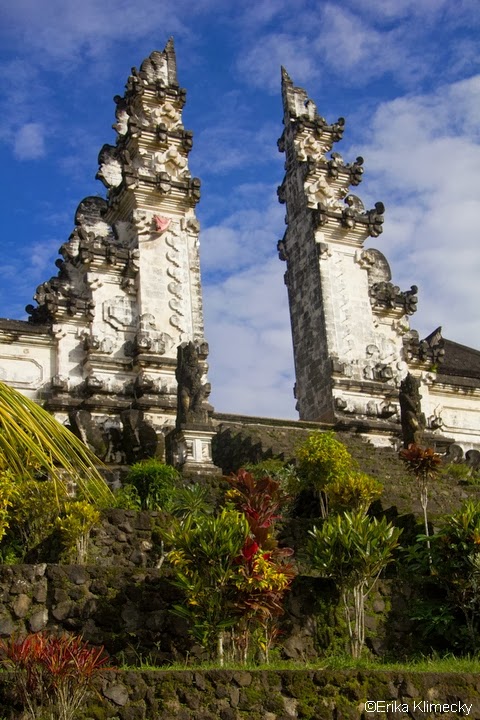
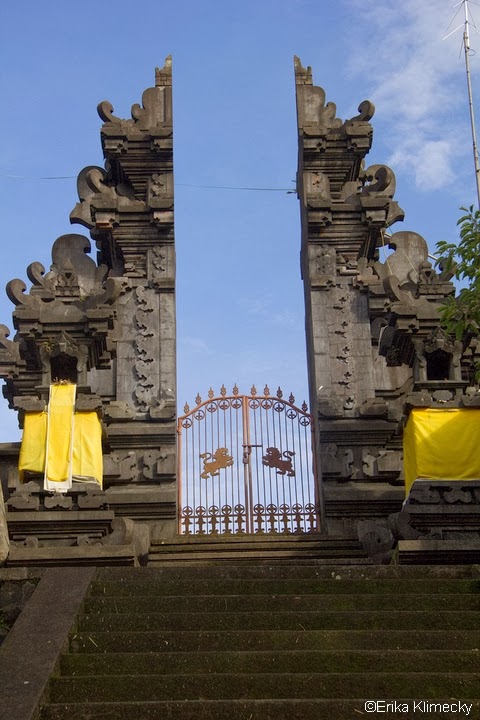
Pingback: The Bat Temple - From My 'Art
Pingback: Four Exotic Cats and a Bear - From My 'Art